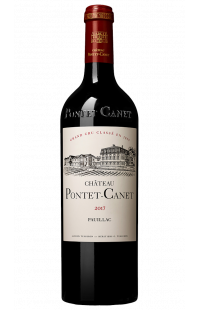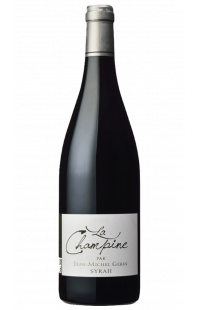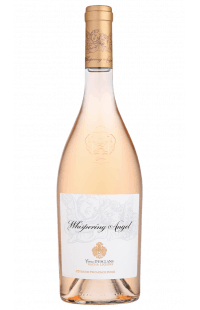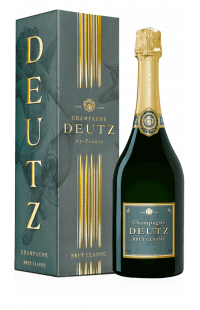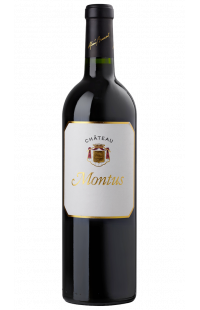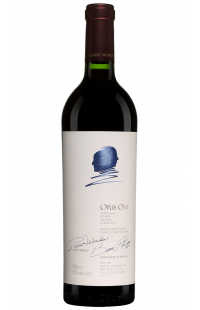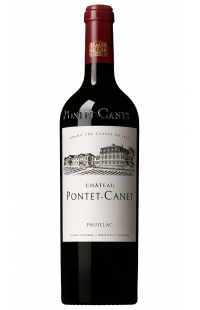- Menu
- All our wines
- Bordeaux
-
Rhône
-
Burgundy
-
Rosés Wines
-
Champagne
- France
-
World
- PRIMEURS
- ORGANIC WINES
Savigny-lès-Beaune Wines
There are 3 products.
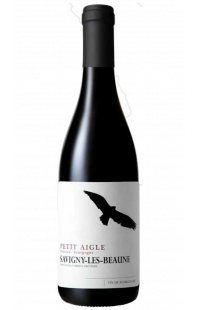
Available in
- Bottle (75cl)
- 30.00€ / bottleTASTING NOTES
Specifications
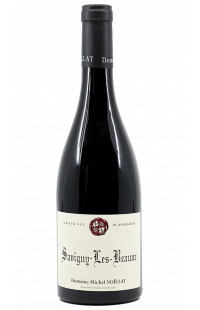
Available in
- Bottle (75cl)
- 36.90€ / bottleTASTING NOTES
Specifications
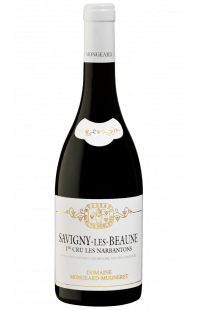
Mongeard-Mugneret : Savigny-les-Beaune Premier Cru "Les Narbantons" 2021
Burgundy - Savigny-Les-Beaune - Red Wine -Available in
- Bottle (75cl)
- 72.00€ / bottleTASTING NOTES
Specifications
Savigny-lès-Beaune Wines: A Journey Through Burgundy's Terroir
Discover everything you need to know about the wines of Savigny-lès-Beaune, their history, terroir, grape varieties, winemaking methods, and much more. A comprehensive guide for wine enthusiasts.
Savigny-lès-Beaune, a picturesque small village located in Burgundy, is renowned for its exceptional wines that captivate enthusiasts worldwide. Situated north of Beaune, this village offers a diversity of red and white wines produced on varied terroirs. The wines of Savigny-lès-Beaune stand out for their elegance and finesse, faithfully reflecting the richness of their terroir.
History and Heritage of Savigny-lès-Beaune Wines
Historical Origins
The history of Savigny-lès-Beaune wines dates back to the Gallo-Roman era. From the Middle Ages, Cistercian monks played a crucial role in the development of local viticulture. The reputation of Savigny-lès-Beaune wines was forged over the centuries through rigorous viticultural tradition and respect for ancestral practices.
Evolution Through the Centuries
Over the centuries, viticulture in Savigny-lès-Beaune evolved in response to climatic, economic, and social changes. Winemaking techniques were perfected, allowing vintners to produce increasingly refined wines. The classification of vineyards in 1936 also marked an important turning point, officially recognizing the quality of wines from this region.
Impact of History on Viticulture
The historical legacy of Savigny-lès-Beaune is reflected in every bottle of wine. Traditions passed down through generations ensure that each vintage tells a part of the local history. Today's winemakers continue to work with the same ancestral methods while integrating modern techniques to enhance wine quality.
Terroirs of Savigny-lès-Beaune
Soil Types
Savigny-lès-Beaune benefits from a great diversity of soils, ranging from calcareous marl to clay-limestone soils. This variety of terroirs contributes to the complexity and richness of the wines produced in the region. Calcareous soils, in particular, favor the production of fine and elegant wines with good structure and beautiful minerality.
Climate Impact
The climate of Savigny-lès-Beaune is typically Burgundian, with hot summers and cold winters. Precipitation is moderate, allowing optimal grape maturation. Annual climatic variations strongly influence the character of the vintages, making each year unique.
Production Zones
The vineyards of Savigny-lès-Beaune are spread across several slopes and valleys, each bringing distinct characteristics to the wines. The most renowned areas include premier crus such as Les Vergelesses and Les Serpentières, which produce wines of great finesse and complexity.
Grape Varieties Used in Savigny-lès-Beaune
Red Grapes
Pinot Noir is the main red grape variety cultivated in Savigny-lès-Beaune. This noble grape is prized for its ability to express terroir nuances, producing wines with red fruit, spice, and underbrush aromas. Savigny-lès-Beaune red wines are known for their elegance, fine structure, and aging potential.
White Grapes
Chardonnay is the dominant white grape variety in Savigny-lès-Beaune. This versatile grape produces rich and complex white wines with aromas of white fruits, flowers, and minerals. Savigny-lès-Beaune Chardonnays are often aged in oak barrels, adding notes of vanilla and butter to their aromatic profile.
Characteristics of Local Grape Varieties
The grape varieties of Savigny-lès-Beaune are selected for their ability to adapt to local conditions and fully express the terroir. Pinot Noir and Chardonnay, in particular, show great diversity of styles depending on the plots and winemaking techniques employed.
Traditional Winemaking Methods
Harvesting
Harvesting in Savigny-lès-Beaune is generally done manually, allowing for rigorous selection of clusters. This method ensures that only the healthiest and ripest grapes are used for winemaking, guaranteeing optimal quality.
Fermentation
The fermentation of Savigny-lès-Beaune wines often takes place in stainless steel tanks or oak barrels. For red wines, malolactic fermentation is commonly practiced, softening acidity and adding complexity to the wine. White wines may also undergo this fermentation to develop rounder and richer aromas.
Aging and Maturation
Aging of Savigny-lès-Beaune wines is typically done in oak barrels, with a variable proportion of new barrels depending on the desired style. This step refines tannins, adds woody aromas, and promotes the development of aromatic complexity. Red wines may be aged for 12 to 18 months, while whites often benefit from shorter aging periods.
Grand Crus of Savigny-lès-Beaune
Premier Crus
Savigny-lès-Beaune boasts several prestigious premier crus, each offering unique characteristics. Among the most renowned are Les Vergelesses, Les Narbantons, and Les Serpentières. These wines are often more complex and have a higher aging potential than village wines.
Village Wines
Village wines from Savigny-lès-Beaune, while less famous than premier crus, offer excellent quality and good value for money. They are typically fruity, elegant, and accessible, ideal for more immediate consumption.
Major Distinctions
Savigny-lès-Beaune wines are regularly awarded medals and honors at national and international competitions, attesting to their consistent quality. Distinctions and high ratings from prestigious publications reinforce the appellation's reputation as a producer of high-quality wines.
Tasting Profile of Savigny-lès-Beaune Wines
Aromas and Flavors
Red wines from Savigny-lès-Beaune are distinguished by their cherry, raspberry, spice, and underbrush aromas. On the palate, they are elegant, with fine tannins and beautiful acidity. White wines present aromas of apple, pear, white flowers, and minerals, with a creamy texture and a fresh finish.
Food and Wine Pairings
Savigny-lès-Beaune wines are very versatile and pair well with a variety of dishes. Reds go well with red meats, roasted poultry, and aged cheeses. Whites perfectly accompany seafood, grilled fish, and creamy poultry dishes.
Evolution on the Palate
Savigny-lès-Beaune wines evolve beautifully over time, developing more complex aromas and a more harmonious structure. Red wines gain depth and complexity, while whites become rounder and more nuanced with age.
Producers of Savigny-lès-Beaune
Renowned Estates
Among the renowned wine estates in Savigny-lès-Beaune are Domaine Pavelot, Domaine Simon Bize, and Domaine Chandon de Briailles. These producers are known for their commitment to quality and authenticity in their wines.
Independent Winemakers
In addition to major estates, many independent winemakers in Savigny-lès-Beaune produce high-quality wines. These small producers often bring a personal touch to their wines, reflecting their passion and expertise.
Local Cooperatives
Cooperatives also play an important role in viticulture in Savigny-lès-Beaune. They allow small producers to pool their resources and market their wines more effectively while maintaining high quality standards.
Visiting Savigny-lès-Beaune and Its Vineyards
Wine Routes
Exploring the vineyards of Savigny-lès-Beaune is an unforgettable experience for any wine enthusiast. Wine routes offer breathtaking panoramas and allow you to discover the different plots and terroirs of the region.
Tastings and Tours
Many estates open their doors to visitors for tastings and guided tours. It’s an ideal opportunity to meet winemakers, learn about the production methods, and taste a selection of Savigny-lès-Beaune wines.
Events and Festivals
Savigny-lès-Beaune regularly hosts wine-related events and festivals, such as the Fête des Vendanges de Savigny. These events offer a unique opportunity to taste a wide range of wines and celebrate the local viticultural culture.
Economic and Market Aspects of Savigny-lès-Beaune Wines
Economic Importance
Viticulture is a cornerstone of Savigny-lès-Beaune’s economy, generating employment and supporting the local economy. The international reputation of the region’s wines also attracts tourists and investors.
Exports
Savigny-lès-Beaune wines are exported worldwide, particularly to the United States, the United Kingdom, and Asia. This internationalization strengthens the appellation’s reputation and opens new opportunities for local producers.
Domestic Market
In France, Savigny-lès-Beaune wines are prized for their quality and authenticity. They hold a prominent place on the wine lists of gourmet restaurants and are sought after by French wine enthusiasts.
Ecological Impact of Viticulture in Savigny-lès-Beaune
Sustainable Practices
Many winemakers in Savigny-lès-Beaune adopt sustainable viticultural practices to preserve the environment. This includes the use of organic farming techniques, reducing chemical inputs, and promoting biodiversity in vineyards.
Ecological Initiatives
Ecological initiatives in Savigny-lès-Beaune include the installation of wastewater treatment systems, the adoption of conservation agriculture, and participation in reforestation programs. These efforts aim to minimize the carbon footprint of viticulture and protect local ecosystems.
Organic Certification
Many estates in Savigny-lès-Beaune obtain organic certification, demonstrating their commitment to environmentally friendly agricultural practices. This certification is a mark of quality for consumers concerned about the ecological impact of their wine consumption.
Investing in Savigny-lès-Beaune Wines
Aging Potential
Savigny-lès-Beaune wines, particularly premier crus, possess excellent aging potential. While delicious in their youth, they gain complexity and harmony over time, making them prized choices for collectors and investors.
Investment Value
Investing in Savigny-lès-Beaune wines can be profitable, especially for exceptional vintages. The prices of these wines tend to increase over time, offering an interesting return on investment for discerning enthusiasts.
Tips for Collectors
For collectors, it is recommended to focus on premier crus and renowned estates. Storing bottles in optimal conditions of temperature and humidity is essential to ensure proper aging and preserve their value.
Testimonials from Sommeliers and Experts
Sommelier Reviews
Sommeliers regularly praise Savigny-lès-Beaune wines for their elegance, finesse, and ability to reflect the terroir. They particularly appreciate the diversity of styles, which allows finding a wine suited for every occasion and dish.
Expert Critiques
Wine critics highlight the consistent quality of Savigny-lès-Beaune wines and their ability to evolve favorably with age. High ratings from prestigious publications like Wine Spectator and Decanter reinforce the appellation’s reputation.
Ratings and Awards
Savigny-lès-Beaune wines frequently accumulate medals and awards at national and international competitions. These distinctions attest to the excellence of local winemakers and their commitment to quality.
Exceptional Vintages
Best Years
Certain years stand out for their ideal climatic conditions and exceptional grape quality. Recent notable vintages include 2015, 2017, and 2019, known for their balance and aromatic complexity.
Vintage Comparisons
Comparing vintages allows appreciating the nuances and variations from year to year. For example, hot vintages like 2018 produce richer and more opulent wines, while cooler years like 2014 offer more elegant and acidic wines.
Vintages to Avoid
While most vintages of Savigny-lès-Beaune are of good quality, some years may be less favorable due to challenging climatic conditions. Vintages such as 2003 and 2011 are often considered less successful and may exhibit defects.
Defects and Potential Problems in Wines
Common Issues
Savigny-lès-Beaune wines can sometimes present defects such as premature oxidation, reduction, or cork taint. These problems can be due to improper storage conditions or winemaking flaws.
How to Identify Them
It is important to recognize potential defects in a wine. Oxidation manifests as nutty and cooked apple aromas, while reduction may produce sulfurous or rubbery smells. Cork taint often presents as a wet cardboard or moldy aroma.
Possible Solutions
To avoid these issues, it is crucial to store wines in appropriate conditions, at a consistent temperature and away from excessive light. In case of a defect, techniques like decanting can help mitigate unwanted aromas.
The Future of Savigny-lès-Beaune Wines
Innovations in Viticulture
Winemakers in Savigny-lès-Beaune are adopting new technologies and methods to improve wine quality. This includes the use of drones to monitor vineyards, selecting indigenous yeasts for fermentation, and experimenting with new types of barrels.
Market Trends
The market for Savigny-lès-Beaune wines is evolving with consumer preferences. There is increasing demand for organic and natural wines, prompting producers to adopt more sustainable practices and explore new winemaking styles.
Future Perspectives
The future of Savigny-lès-Beaune wines looks promising, with growing international recognition and consistent quality. Winemakers continue to innovate while respecting traditions, ensuring the longevity of this prestigious appellation.
Summary and Conclusion
Savigny-lès-Beaune is a wine village with a rich history and a well-deserved reputation for its exceptional wines. From Grand Crus like Les Vergelesses to traditional winemaking techniques, every aspect of viticulture in Savigny-lès-Beaune contributes to the quality and uniqueness of its wines. By visiting this charming village, wine enthusiasts can discover the passion and expertise behind every bottle.
FAQ on Savigny-lès-Beaune Wines
What are the main grape varieties used in Savigny-lès-Beaune wines?
The main grape varieties are Pinot Noir for red wines and Chardonnay for white wines.
How to properly store a Savigny-lès-Beaune wine?
Store bottles at a constant temperature of 12-14°C, away from light and excessive humidity.
What are the best food and wine pairings with Savigny-lès-Beaune wines?
Red wines pair well with red meats and aged cheeses, while white wines complement seafood and fish.
What are the most renowned vintages of Savigny-lès-Beaune?
The vintages 2015, 2017, and 2019 are particularly renowned for their quality.
How to recognize a defective Savigny-lès-Beaune wine?
A defective wine may exhibit nutty aromas (oxidation), sulfurous smells (reduction), or wet cardboard (corked).
What sustainable practices are adopted by winemakers in Savigny-lès-Beaune?
Practices include organic farming, reducing chemical inputs, and promoting biodiversity.
Conclusion on Savigny-lès-Beaune Wines
Savigny-lès-Beaune wines, with their richness and complexity, are a true treasure of Burgundy. Whether you are a wine enthusiast or a novice, a visit to Savigny-lès-Beaune promises an unforgettable experience. Traditional winemaking techniques, unique terroirs, and a commitment to sustainability make Savigny-lès-Beaune wines exemplary of Burgundian viticultural excellence.
